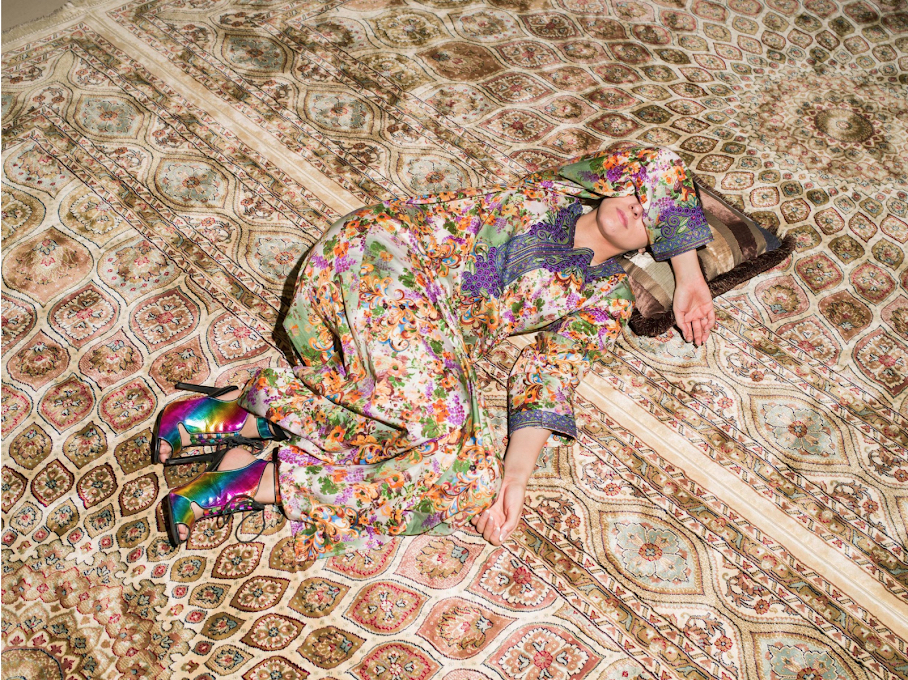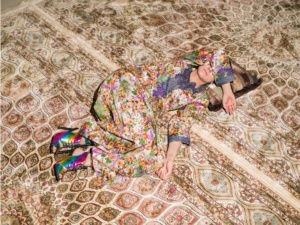
The Kardashians were among the first reality TV stars to gain respect for being what they were: canny enough to convert salacious attention into sustained attention, and then sustained attention into not only capital but empire. They successfully challenged the idea that relationships played out in a famous-for-being-famous feedback loop with the public are not genuine. Rich, beautiful, and proximate to conventional celebrity, the Kardashians were nonetheless recognizably a family, and maintained a basic accessibility which made them plausible aspirational figures — not only for their glamour but for how effectively they managed a kind of panoptic selfhood in an unfolding era of mass surveillance and constant self-documentation. Knowing how to be public was a newly important life skill, and Kris Jenner made herself the world’s leading expert.
“Influencer” is now a common enough profession. Plenty of non-celebrities make a living through the practices of celebrity, garnering and sustaining interest from strangers online. The term influencer evokes the glamour that traditional celebrities have long embodied, but influence and celebrity are not the same thing. Not only do influencers operate without the institutional support and with a greater degree of vulnerability than conventional celebrities benefit from, as Crystal Abidin points out; they also point toward different structures of feeling, different attitudes toward vicariousness, emulation, and envy. There is a difference between wanting what somebody has and wanting to be them, and between wanting to be someone and wanting to take their advice.
Though celebrities use social media, it is not fundamental to the attention they receive, as it is for influencers. Since we can all more or less use the media that influencers use, our expectations of them are different. Whereas film and television might have aimed to convince us that stars were inherently better than average — better looking, more talented, more poised — social media supposedly provide us with a shared set of resources and conventions with which to tweak ourselves for each other. Everyone is already in front of a camera, but some of us are better at living this way than others, and by consuming them we might get better too.
Influencers profit through sponsorships, of course, and as Isabel Munson writes this week in “The Genre of You,” advertising represents not a “break in continuity,” as with a TV commercial, but “an extension of the story.” The performer leaves hints and constructs deliberate breaks between the performance and the “reality,” trading, as Abidin argues in her essay this week, on the false binary between online and “real” life. Following influencers becomes a kind of interactive game. The audience gets to piece together clues of who the person really is behind the shared artifice of the medium. We follow the narrative of their lives and contribute to writing it: Celebrity becomes a collective project, wherein followers feel as though they have a stake in the ascent and downfall of the person observed. Sponsored content is not merely advertising but a barometer of success — the announcement of a new or continued relationship, a career decision, or an aesthetic or ethical decision for audiences to cheer or criticize, drawing us in to the influencer’s metanarrative.
Consuming content this way is as much a form of self-optimization as entertainment. As Adrienne Matei points out this week in “Seeing Is Believing,” one’s follower count can make a substantive difference in quality of life — it can be the difference between a job opportunity or a job loss. Influencers have a practical skill — gaining and sustaining attention — and their glamour is presented not only for an audience’s passive consumption but as proof of ability. “Demonstrating that mastery over the conventions is how one establishes one’s influence,” Matei writes. The question isn’t whether or not this presentation of self is more or less “real,” but how well it is managed and how well influencers can keep audiences engaged.
It’s not an inborn advantage so much as the powers of transformation that make an influencer. We like to see feats of transcendence, evidence of the gap between person and presentation, some residue of the labor required to vault from one to the other. Just as important, we watch for feats of competence: Influencers are self-help gurus as much as they are entertainers, showing off a skill set and, crucially, a clarified sensibility amid an onslaught of stimuli and possibilities of selfhood. Every beauty shot is also a tutorial, if not in a given look then in how to collect and present oneself as a coherent individual.
We have been trained by an onslaught of advertising to be wary of overt influence, to imagine ourselves savvy in the ways of media manipulation and generally capable of seeing through it. Influencers play to that savvy, letting us feel as though we can be inside and outside the pose simultaneously. There is no reward ultimately in imagining oneself beyond the reach social influence, an impregnable tower of isolation. We can think instead about what sort of influence we choose, and how to prevent it from controlling us.
Featuring:
“Layers of Identity,” by Crystal Abidin

“Seeing Is Believing,” by Adrienne Matei

“The Genre of You,” by Isabel Munson

Thank you for your consideration. Visit us next week for Real Life’s upcoming installment, YOUTUBE GENRES, featuring belief, manipulation, embodiment, and home.